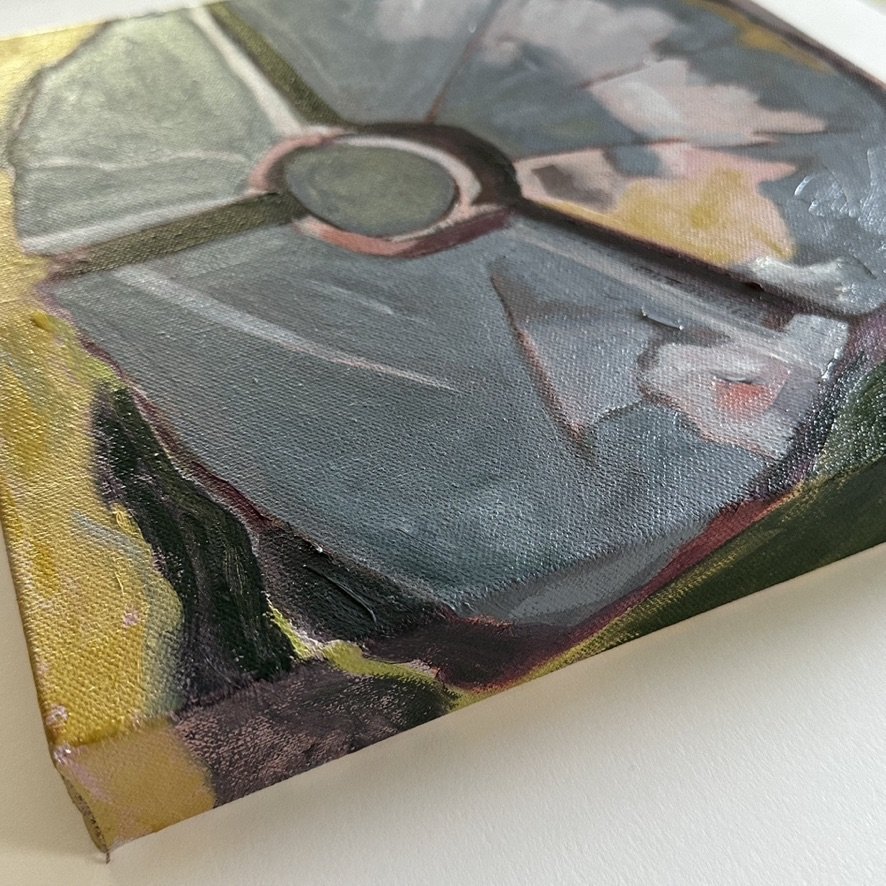Kim Tanzer
Gainesville Florida
Website
kimtanzer.net
Social Media
Instagram
How would you describe your work?
I work in series of drawings and paintings, using a variety of media. Much of my work is landscape informed, which I balance with abstractions and speculative narratives. Inspired by chaos theory, I sometimes try to disrupt scale conventions, so that a small portion of a tree’s bark might read as a landscape, or a landscape as a piece of fabric.
I see drawing and painting from nature as a form of research and try to absorb the world’s energies and forms through my hand. When I make speculative works I hope to extrapolate from the world as it is, to conjure a preferred world into existence.
My art is motivated by a set of abstract questions. How does the world’s energy concretize in form, and, reciprocally, how does form shape the flow of energy? I have the ambition of provoking in my viewers ecological responses to our environment’s degradation by reinforcing a respectful understanding of our beautiful plant.
A sense of spatial precision, quirky shapes, and a quiet gestural quality, often paired with enthusiasm for color, are consistent across most of my work.
What inspires you?
Pattern. Color. Human creativity, in all its forms. The way nature solves structural problems, like the form of leaves on a plant or the flow of clouds across the sky. The reciprocity between nature’s forces—gravity, rainfall, sunlight—and the resulting forms our planet and its inhabitants take.
I am fascinated by the miracles we can spot when we look carefully—dew on a spiderweb, a shadow cast across leaves, a gecko’s tracks on glass.
Can you speak about your process?
In landscape-informed pieces I work from life. This might mean painting or drawing “in the field” or walking, sometimes mapping my path using a digital app. Often I engage various maps by importing a walk into a digital mapping program or researching historic maps. I might begin with reference photos of a subject I’ve encountered while walking, or a satellite image. I transfer this skeletal information to paper or canvas, and work from this beginning point. As with any painting, the marks I make and the media I use become my teachers, and my partners.
My abstractions begin with a play of line or a fluid medium such as paint or ink. As I work, the marks and shapes evolve, often taking on a spatial quality. Because I am trained as an architect these pieces often suggests clues that could be read within the canon of architectural drawings—plan, section, elevation, perspective, axonometric—then “flipped” to provide a simultaneous spatial reading of a different sort.
Within each series, I do many paintings, collages, or drawings, then put them aside as I encounter a question that calls for a different scale or medium. Across the years, I have returned to many of these series and find I am informed by intervening work.
How did you become interested in art?
As a child my teachers noticed I had some talent, and my mother encouraged me, buying oil paints and displaying my art, always, in our family home. I studied studio art as part of an interdisciplinary arts degree, along with modern dance and the theory of creativity. After teaching art in the public schools I went to architecture school, became an architect, then a professor. I always integrated art into my teaching and practice—teaching “architectural sketching” using artists’ techniques, introducing students to art aligned with architecture movements, relying on public artists to inspire community design projects.
Do you have any favorite artists, movies, books, or quotes?
There is a tension in my work between the conceptual art of the mid-century and my secret passion for colorists, and landscapes. My sources of inspiration reflect this tension.
Because I studied art and modern dance during the heyday of process and conceptual art, the rigor and programmed serendipity of Merce Cunningham and John Cage are deeply embedded in my psyche. I similarly admire the procedural works of Laura Dean, Wolfgang Laib, Mierle Laderman Ukeles, Richard Long, Yoko Ono, and Philip Glass. I love the brushwork, colors and dreamy, suggestive paintings of Richard Diebenkorn, Lois Dodd, Henri Matisse, Claude Monet, and Milton Avery. I also love imaginative mark-makers: Louise Despont, Cy Twombley, Tala Madana, and Jean-Michel Basquiat in particular.
Quotes
“To see a world in a grain of sand
And a heaven in a wild flower,
Hold infinity in the palm of your hand
And eternity in an hour.”
- William Blake, Auguries of Innocence
“No man ever steps in the same river twice, for it is not the same river and he is not the same man.”
- Heraclitus
















